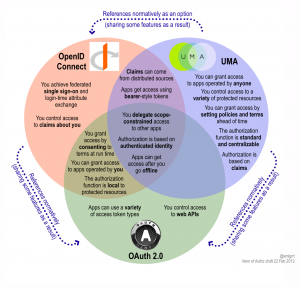At lunch today Sal summarized in one sentence what I have been trying to express for the last couple of years:
There is a market out there for leakage in derived identities (in the Internet)
What we had been talking about was the (inevitable) need for something similar to what the Jericho Forum folks call Core Identity. In simple words, this is the notion that every entity/person should have a “main” secret identity (like a confidential SSN number), from which other usable identities (personas) are derived via a one-way function. (See the Jericho Forum “Identity Commandments”).
The question was how and who was going to manage the issuance and maintenance of the core identities of US citizens. Since the US federal government was the issuing authority for social security numbers in the US, one possibility would be for the US federal government to be the issuing and maintenance authority for core identities (independent of whether the day-to-day managing was actually outsourced to private sector organizations).
The “leakage” here refers to the obtaining (e.g. scraping off the Internet) of pieces of information about one of my persona stemming off my core identity. For example, in my “home-persona” the location of my house may be of interest to advertisers who are doing target-marketing in my neighborhood. We can call this “leakage” because I never authorized the release (and usage) of my home-persona to the relying party (i.e. the marketing company).

